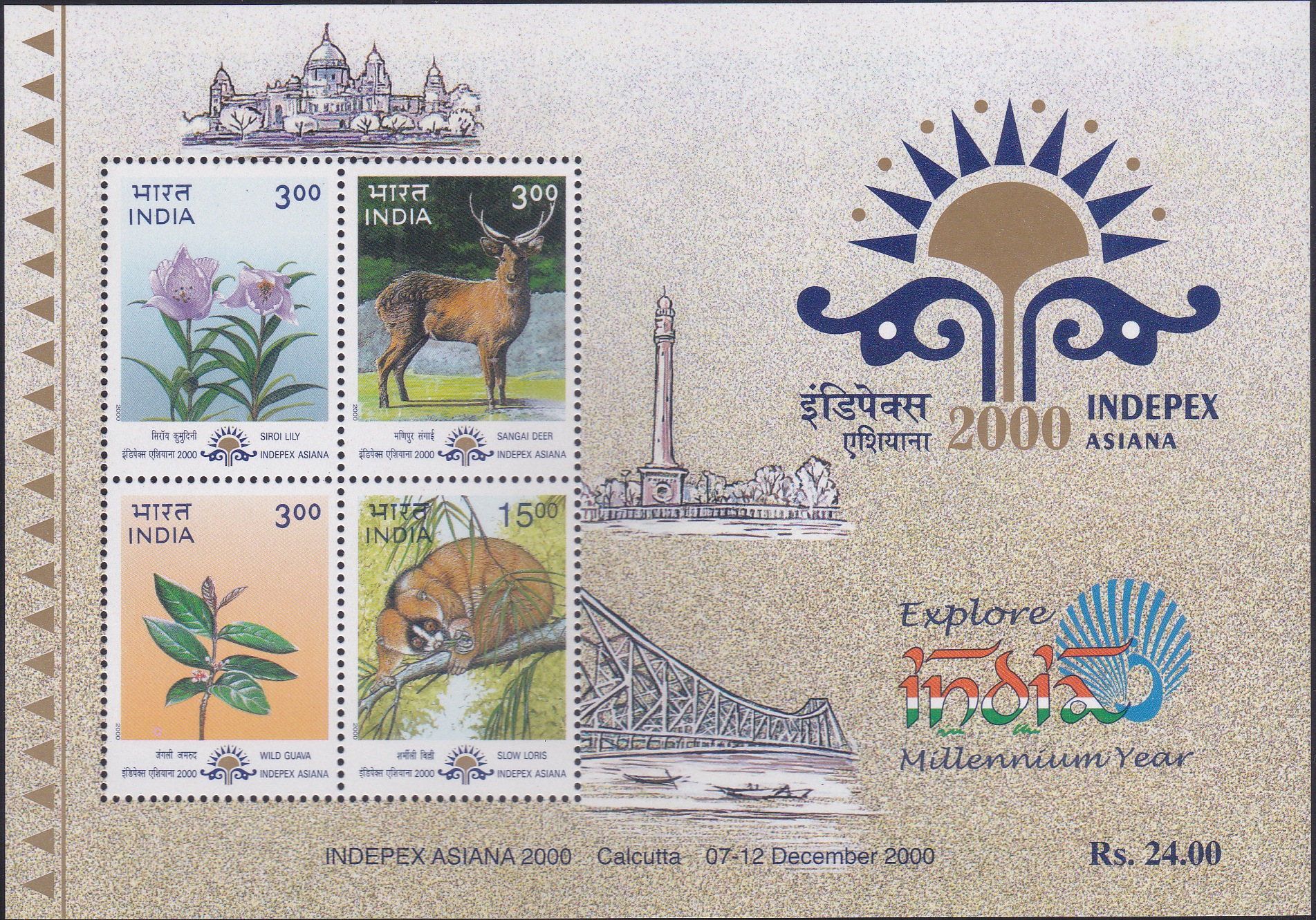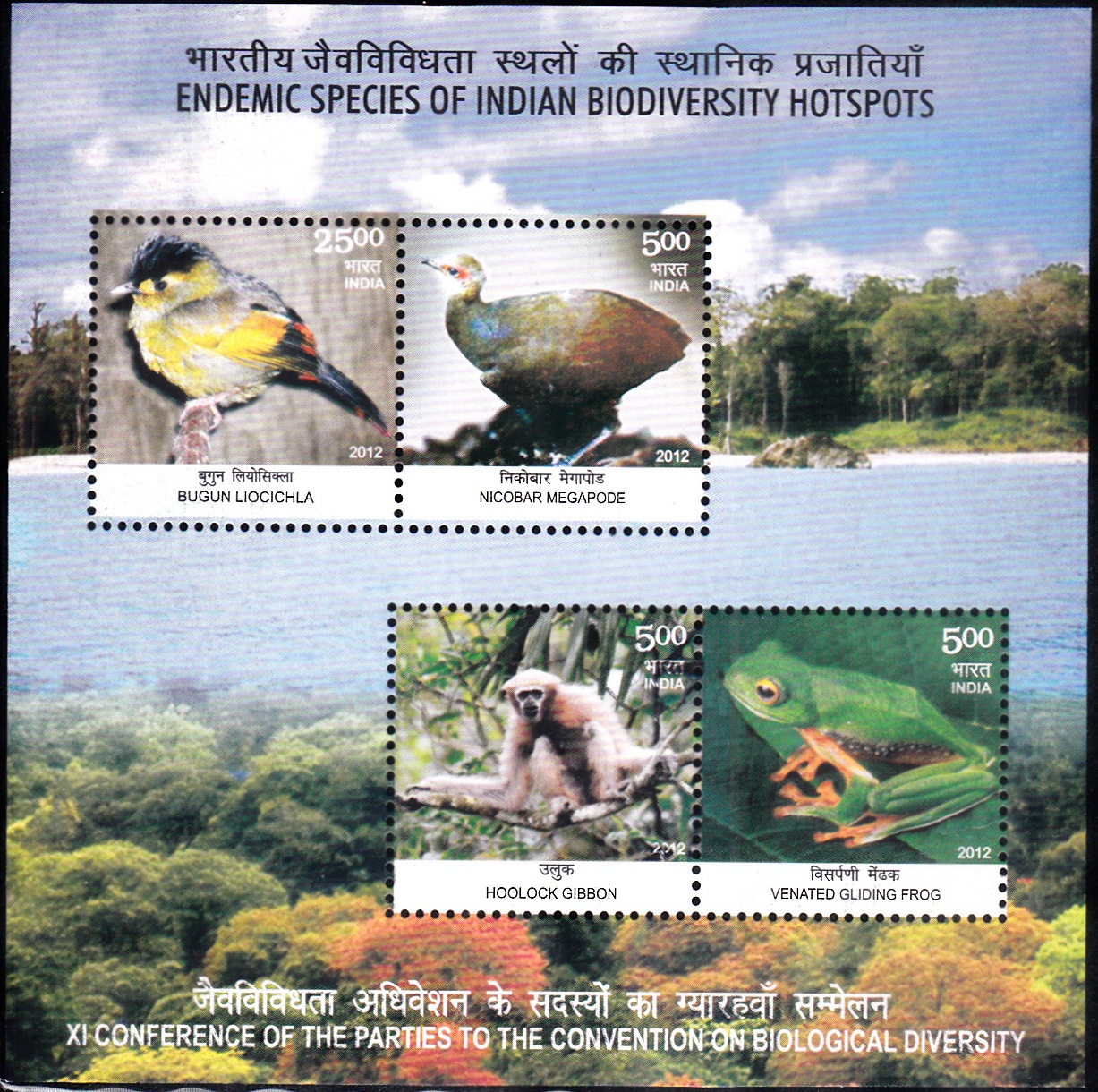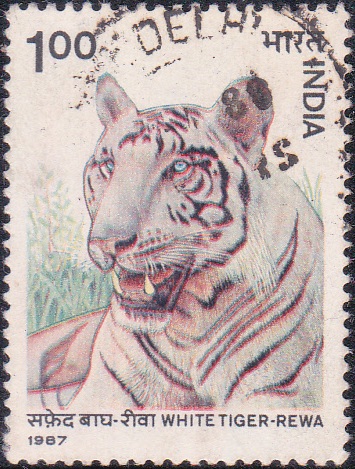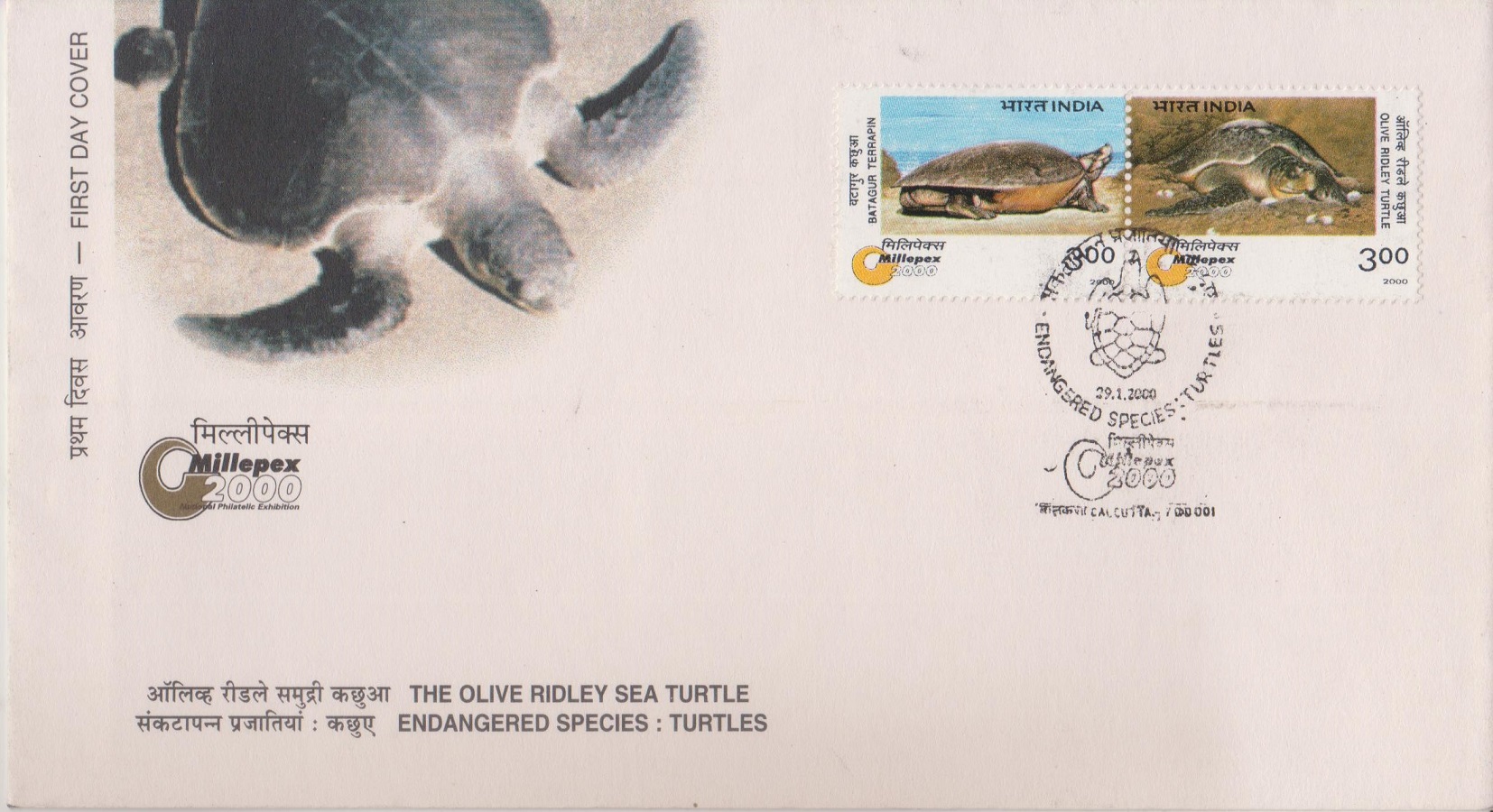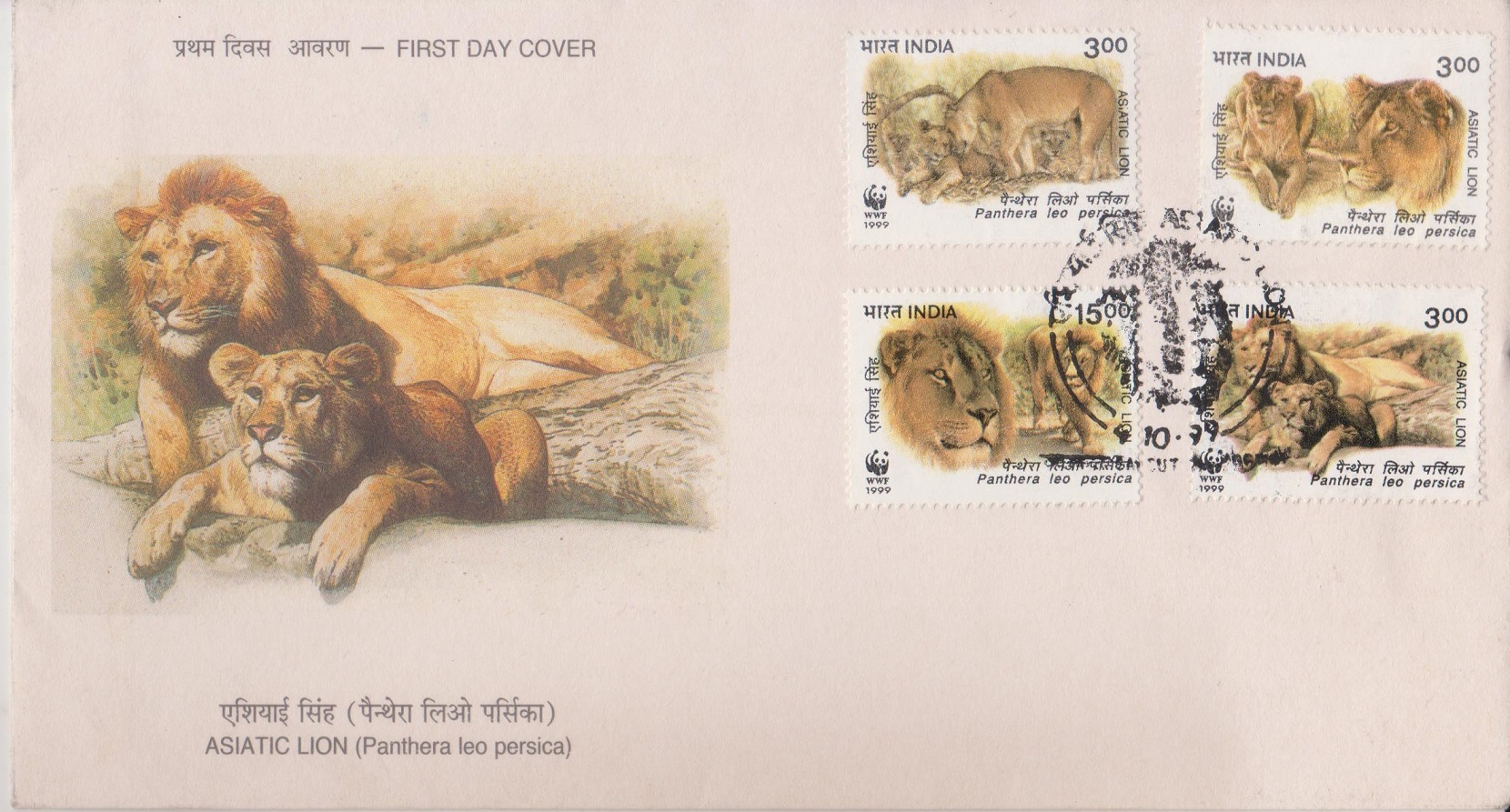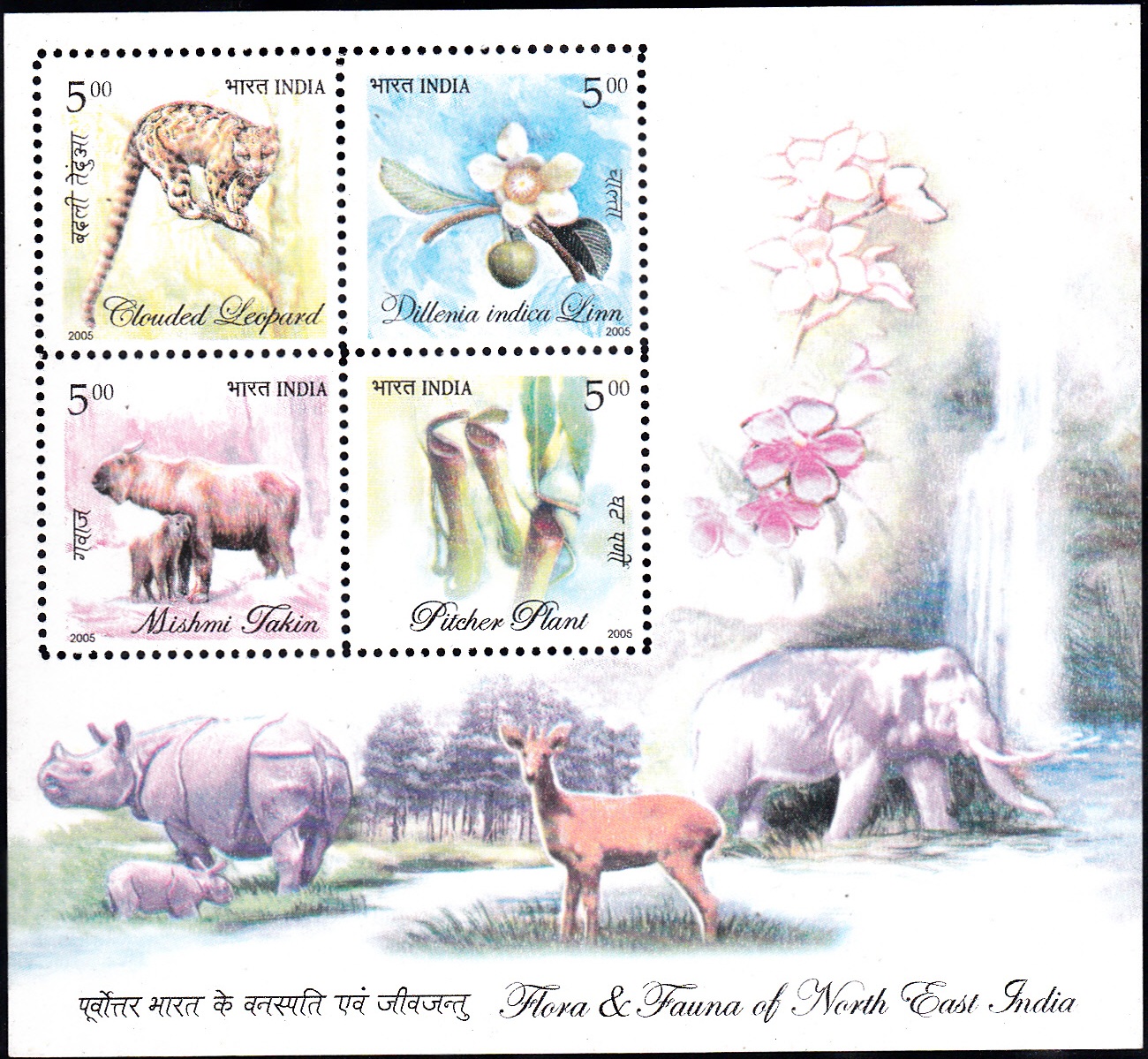
Flora & Fauna of North East India
A Miniature Sheet consisting of 4 nos of postage stamps on the Flora and Fauna of the Northeast India : Clouded leopard, Mishmi takin, Dillenia indica and Pitcher plant :
Issued by India
Issued on Mar 24, 2005
Issued for : The Department of Posts is happy to issue a set of four postage stamps on the Flora & Fauna of North East India.
Credit :
Stamp & FDC : Sankha Samantha
Cancellation : Alka Sharma
Type : Miniature Sheet, Mint Condition
Colour : Multicolour
Denomination : 500 Paisa each
Stamps Printed : 3 Million each
Miniature Sheets : 0.1 Million
Printing Process : Photo Gravure
Printer : India Security Press, Nasik
About :
- The North-East India, a paradise of natural beauty is a home to rich bio-diversity. The Eastern Himalayas, marked by a sharp southward bend from the East-West trend of the Central Himalayas, are much greener due to high rainfall and present a rare physiographical picture. The Brahmaputra valley and the adjoining plains are as sharply contrasted from the Garo, Khasi, Jaintia, Lushai Hills as are the various tribes and non-tribal population. Their geographical isolation has resulted into evolution of exotic and rare plant and animal species.
- Department of Posts is issuing a set of four stamps depicting the flora & fauna of North-East India as described below.
- Clouded leopard [Nenfelis nebulosa (Griffith)]
- The clouded leopard is found in the forests of Sikkim, Assam and adjoining Bhutan and Nepal. It is listed as endangered animal under schedule I, Wildlife Protection Act 1972. It is largely arboreal and inhabits dense evergreen forests where it hunts its prey by night. The Clouded pattern of the flanks is formed by dark blotches more or less lined with black and divided by paler interspaces. These characteristics differentiate it from other cat family animals. Its feet resemble those of the panther, tiger and the lion. The markings of the clouded leopard give it beauty and majesty.
- Mishmi Takin (Budorcas taxicolor Hodgson)
- In India, takin is found only in the Mishmi hills and Arunachal Pradesh. It is also found in Bhutan Himalayas and in the mountains of the Salveen–Irrawaddy divide. It is listed as endangered animal under schedule I Wildlife Protection Act 1972.
- They live in the steepest and most thickly wooded declivities of their native mountains. They are usually found in the dense bamboo and rhododendron jungle at altitude of 2100-3000 m. In the summer they can be seen in herd. The takin adult male is golden-yellow and young male is reddish brown in front merging into black.
- Dillenia Indica Linn. (Dilleniaceae)
- A handsome evergreen tree upto 30-80 ft., is commonly seen along banks of forest streams, also found in the moist and evergreen forests of sub-Himalayan tract, Assam and Bengal.
- Leaf is oblong – lanceolate, flowers large, white fragrant and solitary, fruit large and hard.
- The timber is used in the form of planks & rafters and for making tool handles and bottoms of boats. The ripe fruit is used as flavouring in curries, jams and jellies. The bark and leaves are astringent. Dried leaves are used as a substitute for sand paper.
- The Pitcher plant (Nepenthes khasiana)
- The Pitcher plant (Nepenthes khasiana) Hk is endemic to Meghalaya. It is found in the Jarain area of the Jaintia Hills and the Baghmara area of the Garo Hills as well as in the Khasi Hills.
- The most interesting part of the Pitcher plant is its leaf. The leaf is modified into different parts – the lamina, the pitcher, the lid and the tendril. The Pitcher is the special modification designed to catch insects. At the apex of the pitcher is the lid which covers the pitcher. The Pitcher plant is unique in that it is an insectivorous plant, trapping insects in the pitcher for its nutrition.
- The only Nepenthes species native to India, N. khasiana is a remarkably plastic plant, able to adjust to a wide variety of climatic conditions. It is considered the most cold-tolerant Nepenthes, and is reported to be able to withstand temperatures as low as -2 C. The size of the pitcher ranges between 2 inches to 10 inches.
- The plant is called Tiew-Rakot, which means demon-flower by the Khasis while it is called Kset Phae by the Jaintias, Kset meaning net with a lid and Phare meaning fly. In the Garo Hills, it is called memang-Koksi, which translates as the basket of the devil.
- The Pitcher plant is an endangered species and its export is prohibited.
- Text : Based on material given by proponents.
Subscribe
Login
0 Comments



